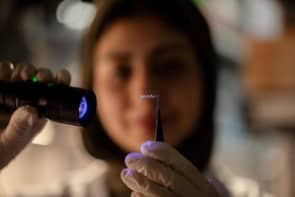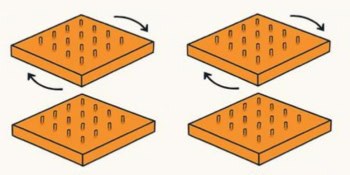Medical physicists have devised a new technique that promises to measure the water content of the human body quickly and painlessly. Within two hours of drinking a solution of heavy water, the patient's water content can be determined by the amount of heavy water in their breath, according to Simon Davies of the University of Keele in the UK and colleagues. A deficit or excess of body water is a symptom of certain diseases, and accurate measurements are crucial for treatments such as kidney dialysis to work properly (S Davies et al 2001 Physiol. Meas. 22 651).
In trials, patients drank a measure of heavy water – the exact amount depended on their weight – mixed with tap water. Davies and team then collected breath samples from the patients every four minutes for the next two hours. Heavy water is formed when two deuterium atoms replace the hydrogen atoms in a water molecule. Deuterium is chemically identical to hydrogen, but it is heavier because it contains an extra neutron.
The exhaled moisture consisted of ordinary water, heavy water, and a small amount of water containing the naturally occurring isotope oxygen-18. Each sample was mixed with protonated water to create ions of the three types of water, which all have different ratios of charge to mass. Their relative abundances were measured using a technique known as ‘flowing afterglow mass spectrometry’. Since the fraction of oxygen-18 in ordinary water vapour is well known, Davies and team were able to calculate the proportion of deuterium in their breath samples.
The researchers found that the levels of deuterium in the patients’ breath became stable two hours after drinking the heavy water, and this indicates that the heavy water is evenly distributed in the body. This measurement, together with each patient’s heavy water dose, is used to calculate the total amount of body water. “We are now developing a user-friendly instrument that should be ready for hospitals in 2002”, team member David Smith told PhysicsWeb.
Until now, doctors have gauged the level of water in a patient’s body using methods that required blood samples and took several days to complete. Other techniques are based on measurements of the electrical resistance of body tissue, but these are unreliable, partly because the formulae used for converting the data are based on healthy people.



